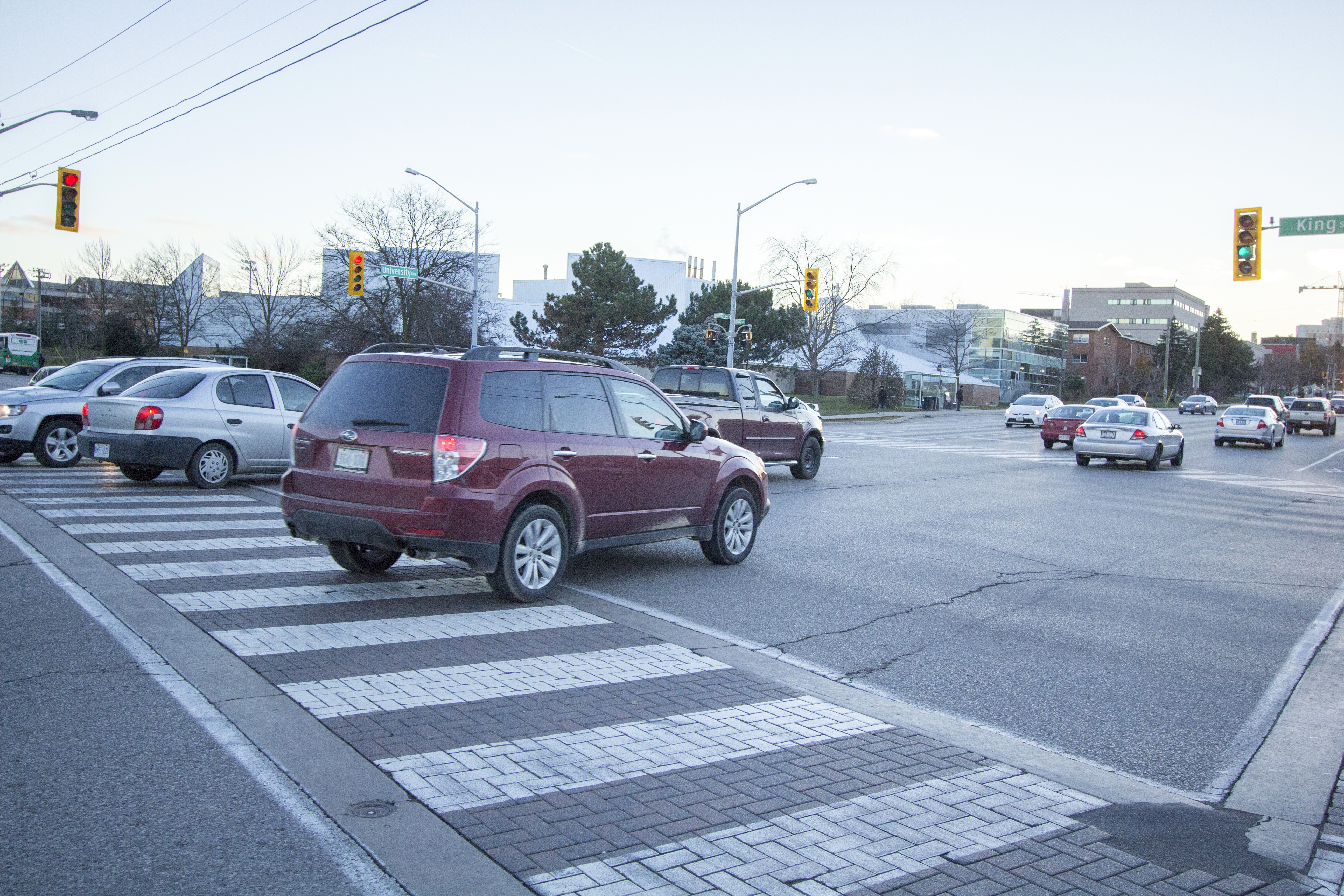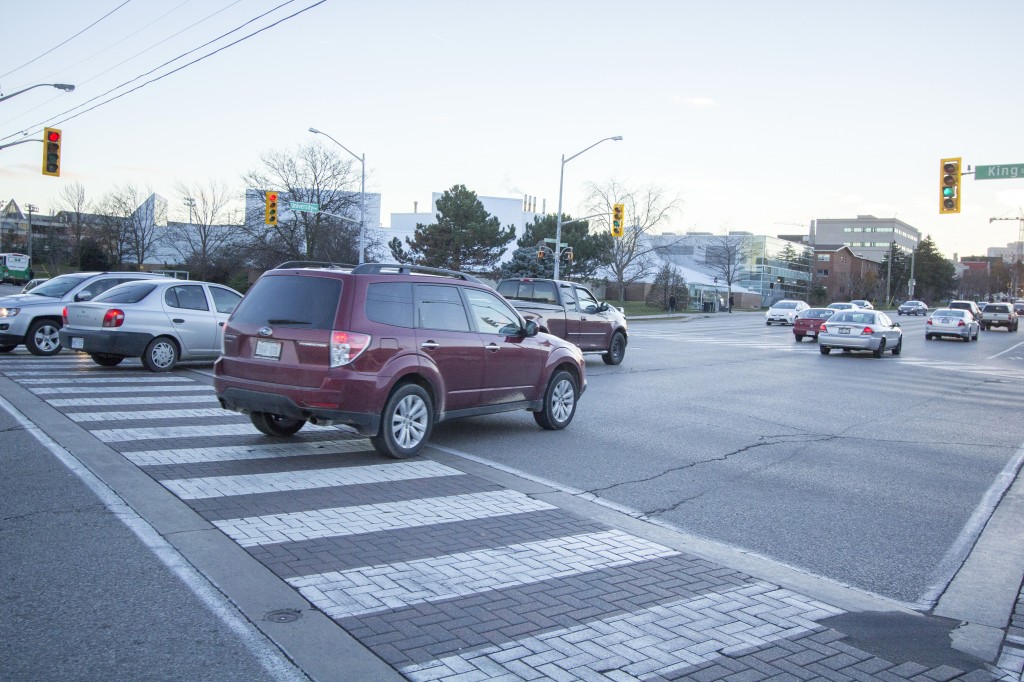Study show region’s adults more likely to drive distracted


A recent study has shown that province-wide, the primary demographic involved in distracted driving are teenagers. However the study, conducted by the Centre for Addiction and Mental Health, showed a different outcome for the Region of Waterloo.
Around a third of distracted driving charges in the region between 2010 and 2013 went to drivers in the 25 to 34 demographic.
Distracted driving is often thought to be limited to the use of handheld electronic devices — typically smartphones. However, many activities involving various objects can be classified as driving while distracted.
“Distracted driving involves anything that is cognitive or physical that takes away from the task of driving,” said Teresa Di Felice, director of government and community relations at the Canadian Automobile Association. “Even having a kid in the back seat who is crying and screaming, though you’re not acting on it, is still a distraction.”
Distracted driving is on the rise in the province of Ontario. In the region alone, police issued around 7,600 tickets from when the legislation came into action in February 2010, up until the end of 2013. Nearly one-third of these tickets were issued in 2013 alone, showing a 22 per cent increase from the previous year.
The provincial government has taken action to curb the rising trend of distracted driving. This past March, provincial legislature passed a bill mandating the fine for distracted driving move from $155 to $280. The Liberals have since pushed for tougher laws, having tabled a bill that would include three demerit points and a maximum fine of $1,000 for distracted driving. This bill was scratched during the election and has yet to be introduced again.
Organizations around the province have also taken it upon themselves to launch independent campaigns against distracted driving. For instance, the CAA is currently in the middle of a campaign meant to target potentially distracted drivers. The campaign, now coming to a close, is designed to spread awareness about the dangers of risky behavior while driving. The CAA is also reminding drivers that distracted driving can include eating, drinking, applying makeup and smoking.
“When we talk about physical distractions it could be reaching for something, eating something, drinking a coffee,” said Di Felice.
Distracted driving has been compared to driving while under the influence in terms of seriousness and risk. However, it differs from driving drunk, as there is no chemical affecting the driver’s behaviour and judgment.
“With distracted driving, you’re choosing the behaviour, so you can choose to stop that behaviour. You can put the device down, you can program your GPS or MP3 player. When you’re impaired, you’re impaired and you can’t switch that off,” said Di Felice.
Distracted driving involves anything that is cognitive or physical that takes away from the task of driving,” – Teresa Di Felice
The key thing to remember about distracted driving is that it is not purely a youth problem. With the statistics showing that the greatest number of distracted drivers in the region are between the age of 25 and 34, it is clear that distracted driving is a behaviour everyone must avoid.
“I’m on the roads every day. I drive to and from work, and not to say I never see a teenager in a car, but I find youth are getting licenses later [and] are less likely to own a car,” said Di Felice.
“People see that it’s a young demographic that is the cause of these accidents. I think it is either a young to mid-professional, from the age of 19 to 40, who has added distractions in their lives.”

